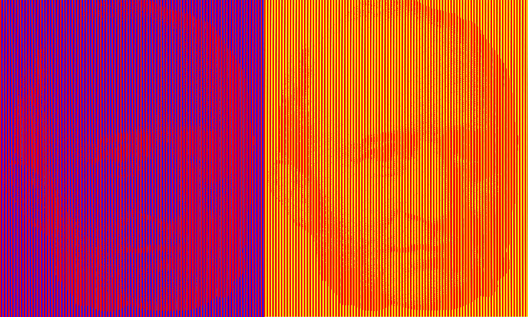Ernst Wilhelm von Brücke1819–1892
Brücke worked as an assistant to Johannes Müller in Berlin and formed close friendships with Helmholtz and du Bois-Reymond. Together with the latter he founded the Physikalisch Gesellschaft which was to become the German Society of Physics. Brücke wrote an influential book on the anatomical description of the human eye (1847) in which he examined optical transmission through the eye, afterimages, stereoscopic vision, and the reflection of light from the backgrounds of the eyes of vertebrates. It was in the context of the last mention that he was led towards development of the ophthalmoscope, but this task was completed by Helmholtz. He retained an interest in physiological optics, and added a new effect to colour vision – the Bezold-Brücke phenomenon. This refers to the change in colour appearance with intensity. The double portrait of Brücke reflects another colour phenomenon – that of assimilation. The vertical red lines throughout the design are physically equivalent but their appearance is modified by the blue and yellow on the left and right, respectively; the red lines look darker when surrounded by blue than by yellow. Brücke studied not only the anatomy of the eye but also the application of sensory physiology to art and poetry. He became professor of physiology at Vienna in 1849 and remained in that post until 1890; among his students were Exner, Kühne, and Freud.
